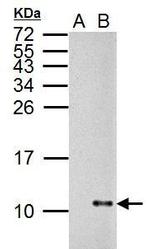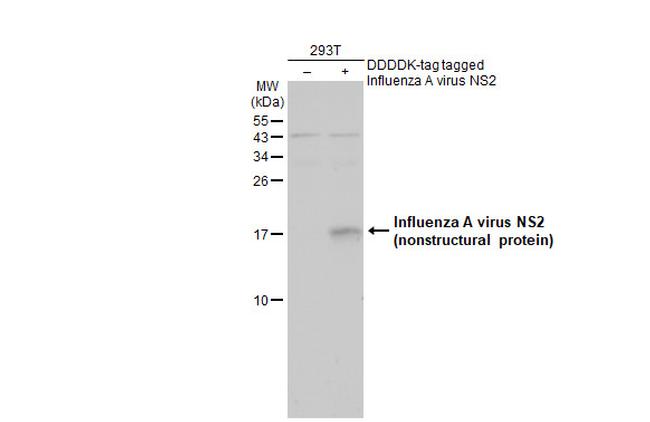Search Thermo Fisher Scientific
图: 1 / 2
Influenza A NS2 Antibody (PA5-32235) in WB


产品信息
PA5-32235
种属反应
宿主/亚型
分类
类型
抗原
偶联物
形式
浓度
纯化类型
保存液
内含物
保存条件
运输条件
RRID
产品详细信息
Recommended positive controls: Influenza virus (A/WSN/1933(H1N1))-infected DF-1 cell lysates.
Store product as a concentrated solution. Centrifuge briefly prior to opening the vial.
靶标信息
Influenza viruses consists of three types (Influenza A, B, and C), which make up three of the five genera in the Orthomyxoviridae family. Commonly know as the flu, influenza strains can affect both birds and mammals. Influenza strains form roughly spherical particles and are similar in composition with viral envelope containing two main types of glycoproteins (hemagglutinin and neuraminidase), wrapped around the central core of the viral RNA genome and other viral proteins that package and protect the RNA. Unusually for a virus, the influenzavirus genome is not a single piece of nucleic acid; rather a seven to eight segmented fragments of negative-sense RNA with each fragment expressing different viral proteins. Influenza spreads seasonally, resulting in about three to five million yearly cases of severe illness and about 250,000 to 500,000 deaths annually or into the millions in pandemic years. Two distinct non-structural proteins NS1 and NS2 are translated from one of the eight RNA segments by using different reading frames.The influenza A virus NS2 is located in the nucleus and the cytoplasm. NS2 is essential for nuclear export of influenza virus ribonucleoprotein (RNP) complexes.
⚠WARNING: This product can expose you to chemicals including mercury, which is known to the State of California to cause birth defects or other reproductive harm. For more information go to www.P65Warnings.ca.gov.
仅用于科研。不用于诊断过程。未经明确授权不得转售。
篇参考文献 (0)
生物信息学
蛋白别名: Influenza NS2



